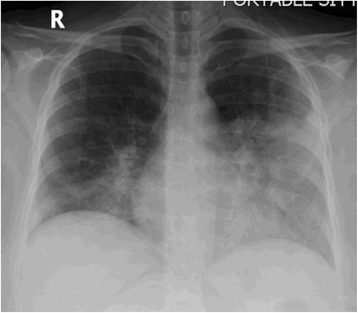Impact of Middle East Respiratory Syndrome coronavirus (MERS-CoV) on pregnancy and perinatal outcome
- PMID: 26936356
- PMCID: PMC4776369
- DOI: 10.1186/s12879-016-1437-y
Impact of Middle East Respiratory Syndrome coronavirus (MERS-CoV) on pregnancy and perinatal outcome
Abstract
Background: Middle East Respiratory Syndrome coronavirus (MERS-CoV) is a viral respiratory disease. Most people infected with MERS-CoV develop severe acute respiratory illness. It was first reported in Saudi Arabia in 2012 and has since spread to several other countries. We report the clinical course of MERS-CoV infection in a pregnant woman who acquired the infection during the last trimester.
Case presentation: The patient is a 33-year-old female working as a critical care nurse. She was 32 weeks pregnant when she presented with respiratory symptoms after direct contact with a MERS-COV patient. Although the patient was in respiratory failure, necessitated mechanical ventilation, and intensive care (ICU) admission, a healthy infant was delivered. The mother recovered. To the best of our knowledge, this is the first reported case of a laboratory-confirmed Middle East Respiratory Syndrome Coronavirus in a pregnant woman.
Conclusions: Middle East Respiratory Syndrome coronavirus (MERS-CoV) known to cause severe acute respiratory illness associated with a high risk of mortality Various factors may have contributed to the successful outcome of this patient such as young age, presentation during the last stages of pregnancy, and possible differences in immune response.
Figures
References
-
- World Health Organization. Middle East respiratory syndrome coronavirus (MERS-CoV) – Saudi Arabia. http://www.who.int/csr/don/21-august-2015-mers-saudi-arabia/en/ (Accessed on August 24, 2015)
Publication types
MeSH terms
LinkOut - more resources
Full Text Sources
Other Literature Sources
Medical


